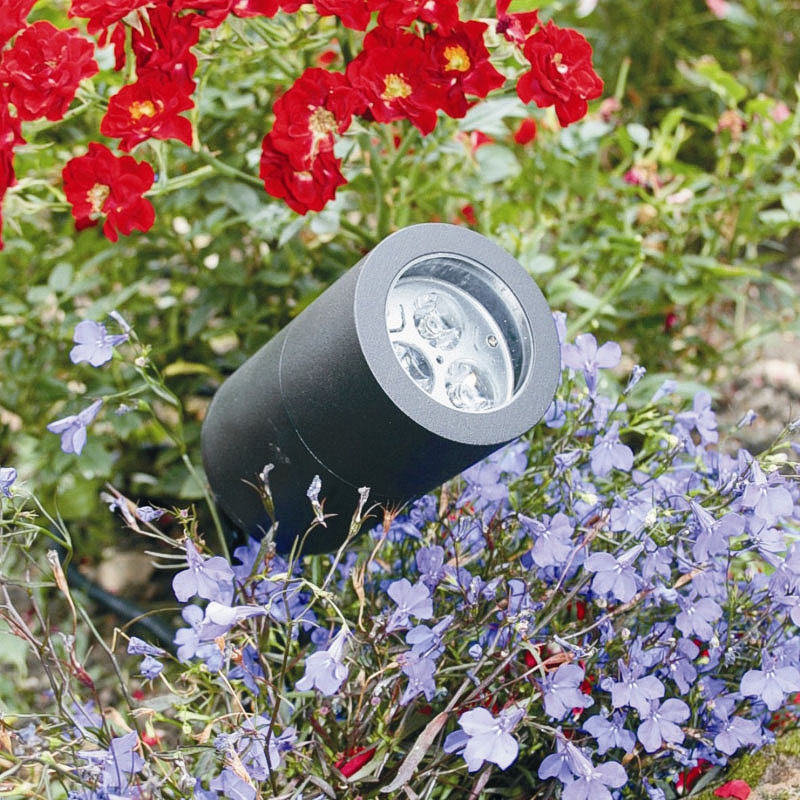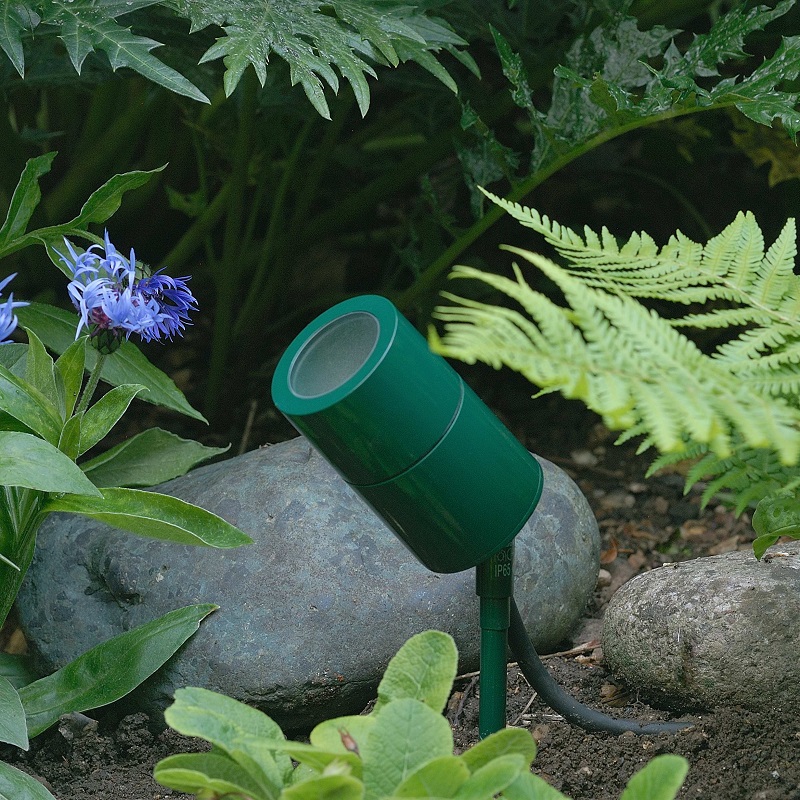Lighting shrub borders is usually “context” lighting – providing a back drop for lighting of trees or focal points in the garden – and for defining the shape of the space at night, so it feels a comfortable space to be in.
I usually assume that a spacing of 3 metres between spike spotlights along a border will reflect the amount of year-round interest in a well planted mixed border. Why? – well it is reasonable to assume that at any time of year there will be one plant every 3m which will be worth seeing, and therefore worth lighting. You could stretch this to 4 metres in a newly planted garden but the effect gets too “spotty”or patchy if you make the spacings too wide. Place the spotlights so they can be hidden behind low planting at the front of the border angled at about 30 degrees above horizontal and point them diagonally at about 45 degrees away from the house, an alternative viewpoint such as the terrace, or the path running alongside the border. Lighting diagonally along the border in this way increases the coverage provided by each spotlight while eliminating definite “hot spots” from pointing spotlights directly at shrubs from close up. It can also produce an interesting interplay of shadows from the edge of one plant onto another, which increases the sense of depth in the border.
The number of spotlights determines coverage: the wattage of lamps fitted determines brightness within the area of coverage. So using brighter lamps (bulbs) doesn’t necessarily increase the coverage. When planting is young, use 5w LED lamps to avoid a “well lit fence” until the plants have grown big enough to need 7w LED lamps. Use 7w LED lamps for mature shrubs to compensate for dense, dark green foliage. Use wide beam “flood” lamps for maximum coverage – 60 degrees in 12 volt MR16 halogen spotlights is better than 50 degrees from a 240 volt GU10 halogen lamp for example. 240 volt lamps are less efficient and therefore less bright than 12 volt halogen lamps anyway, and flexible cabling of 240 volt spotlights has to be shorter to be safe, so you lose the flexibility of 12 volt spotlights which can typically be at the end of an 8 metre cable to give versatility of position when you want to move the spotlight to light new plants, adjust for growth of change position to light seasonal subjects. Always wire 12 volt spotlights individually from a transformer & allow 1 metre of slack cable to allow you to move lights around. Use more tightly focused 36 degree lamps to highlight trees or taller architectural plants in the border, but take care to avoid light trespass into neighbouring gardens - angle spotlights below the hedge or fence line.
Elipta Compact spike spotlights are a flexible choice for shrub border lighting as they take the full range of MR16 lamps up to 50 watts and have glare shield and alternative spike options. The standard spike can be replaced with a 25cm extended spike without any rewiring to raise the spotlight head through growing planting so the spotlight doesn’t get overgrown. When planting dies back in the autumn the shorter standard spike can be refitted so the spotlight remains discreet amongst sparser border foliage.
Copyright 2023; Information based on products supplied by Lighting for Gardens Limited and is advisory only. The company accepts no responsibility for incorrect use or application of information given. Light fittings can become hot in use; exercise appropriate precautions. Exterior electrical installations should be undertaken by a qualified electrician.



